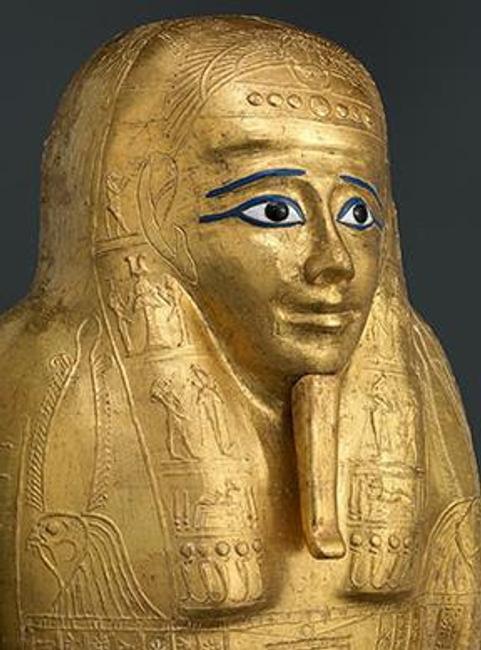The Met Acquires Ancient Egyptian Gilded Coffin
The Metropolitan Museum of Art announced Tuesday that it has acquired an ancient Egyptian gilded cartonnage coffin from the first century B.C. The highly ornamented lid of the coffin is displayed prominently in the Museum’s Lila Acheson Wallace Galleries for Egyptian Art (gallery 138), where it will be seen and enjoyed by millions of visitors.

“This beautiful and unusual coffin is extremely rare, and we are honored to welcome it to the Museum’s collection,” said Daniel H. Weiss, President and CEO of The Met. “It is an extraordinary work of art that will give our visitors the opportunity to appreciate a fascinating period of Egyptian history.”
The mummiform coffin was inscribed for Nedjemankh, a high-ranking priest of the ram-headed god Heryshef of Herakleopolis. The elaborately decorated surface includes scenes and texts in thick gesso relief that were intended to protect and guide Nedjemankh on his journey from death to eternal life as a transfigured spirit. The coffin’s exterior is sheathed in gold, which —– because of its permanent nature —– was associated in ancient Egypt with the gods and the divinized dead. According to ancient texts, the use of gold in the coffin would have assisted the deceased being reborn in the next life.
Unique to this coffin are the thin sheets of silver foil on the interior of the lid, intended to protect Nedjemankh’s face. To the ancient Egyptians, the precious metals gold and silver symbolized several things. On a general level, they could represent the flesh and bones of the gods, or the sun and the moon; on a more specific level, they were identified with the eyes of the cosmic deity Heryshef, whom Nedjemankh served.
Even more remarkably, the long inscription on the front of the coffin’s lid explicitly connects gold and “fine gold” (electrum) to the flesh of the gods, the sun, and the rebirth of the deceased. The association of the inscription with the actual use of metals on the coffin is a rare —– possibly unique —–occurrence.
Officially exported from Egypt in 1971, the coffin has since resided in a private collection. At The Met, it joins the Museum’s renowned ancient Egyptian collection, one of the finest and most comprehensive in the world.











